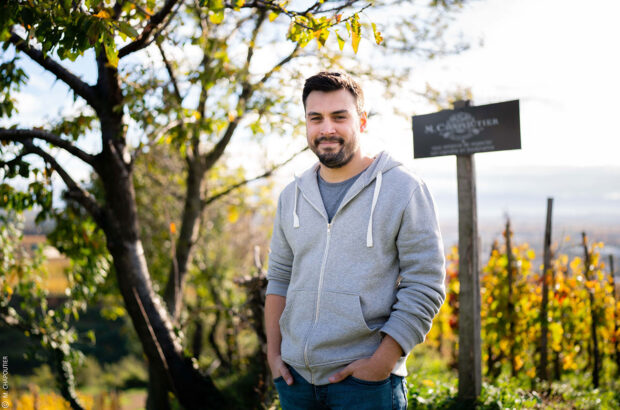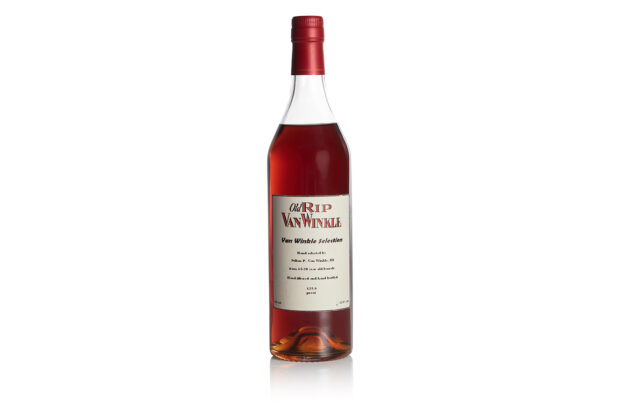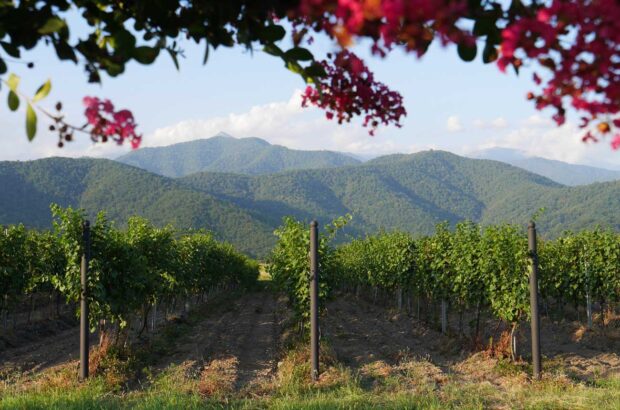A decanter.com promotion
The wines of Sierra Cantabria are the result of the hard work and inspiration of five generations of growers – five generations in touch with the soil, with the sky, with the seasons. Marcos and Miguel Eguren represent the current generation, and of their five wineries, four are in Rioja, and one is in Toro.
A decanter.com promotion
Sustainability is at the heart of the family philosophy. It’s all about caring for the soil and transmitting the spirit of the terroir through the Tempranillo grape; even the stone used to build the Sierra Cantabria winery came from the estate. A few years ago the family decided to embark on a journey towards biodynamics – not embracing the more esoteric aspects, but building on what they had already done. Mineral fertilisers and chemical herbicides had been banished 30 years ago; now they began adapting what they were doing to lunar cycles and the rhythms of nature. This sort of change, they say, was simple – but expensive!
The Sierra Cantabria Rioja vineyards are in San Vicente de la Sonsierra, protected from cold north winds by the Sierra Cantabria mountains. The grapes for Sierra Cantabria Reserva come from Tempranillo vines of over 30 years of age, with the very low average yield of 31 hectolitres per hectare. The vineyard sites here vary greatly: some are rugged, some flatter, some planted with very old vines some with younger vines. But all benefit from the confluence of the Atlantic and Mediterranean climates. Each vineyard therefore has its own character, and it is these different expressions that the wines are intended to transmit. For example, the yeast is a native one, selected on the estate; this applies to all the family’s wines. The choice of oak is careful: for Sierra.
Cantabria Reserva the barriques are French and American oak barriques, and 20% are new. The wine is racked but not filtered. Sierra Cantabria Colección Privada comes from even older vines: just four hectares planted in 1957 and 1959. The average yield is tiny, at 24 hectolitres per hectare, and all the grapes are handpicked in perfect condition. Half of the grapes are whole-cluster fermented, and the wine is aged for 16 months in new oak barriques of which half are French and half American. The result is a combination of modernity with tradition.
At Señorio de San Vicente the vineyard is called La Canoca, and the grape is the almost extinct and very low-yielding Tempranillio Peludo, hairy Tempranillo – the hairs are, as you might guess, on the underside of the leaves rather than on the berries. The winery here was founded in 1991, but the story goes back further – to the early 1980s, in fact. That is when Guillermo started taking cuttings of the very best old Tempranillo he could find, and propagating them on the south-facing slopes of La Canoca. Here the chalky-clay soil and the big variation between daytime and nighttime temperatures provide an ideal environment; the first vintage of San Vicente was in 1991. The wine is aged for 20 months in new barriques, of which 90% are French oak.
El Puntido comes from another winery again, this time Viñedos de Páganos in the medieval village of Laguardia. It’s a magical spot: lovers of dolmens, ancient churches and archeological sites will be very happy here! The vineyard name, El Puntido, means ‘staircase landing’ and it refers to the topography of the land, which lies at about 600m between the high Sierra de Cantabria and the lower river plain of the Ebro. The vineyard surrounds the cellar; the soil here is chalky clay and clay-loam over sandstone, south facing, gently sloping, and planted with Tempranillo in 1975. The roots go down deep, and as a result the wine has a palate of concentrated minerality. Fermentation is in stainless steel vats, and the wine is aged in new French oak barriques.
For Victorino, breed of Toro wines, we leave Rioja. The family fell in love with the land of Teso La Monja some 15 years ago, not least because it was (and is) planted with ungrafted pre-phylloxera Tinto de Toro – the local name for Tempranillo. The vines range from 45 years of age up to a full century and the yield is a miserly 10 hectolitres per hectare. The family had already made outstanding Toro in the shape of Numantha-Termes; now they wanted to make a fresher, more mineral expression of Toro, with elegance to match its power.
The site is north-facing, with loamy, gravelly soil and offers a long vegetative cycle. The winery itself reflects the sober elegance of the wine, and also its modernity: it is equipped for five different vinification systems – closed vats set up for pigeage, ordinary closed vats, open vats with pigeage, ordinary open vats, open conical vats. And actually there’s a sixth variation as well: an egg-shaped oak vat, courtesy of Taransaud, which seems to produce a particularly silky and integrated result.
Victorino gets light pumpovers during its stay in vat, but more notably, it’s foot-trodden three times a day during fermentation – that’s about as traditional as you can get, and it extracts only very lightly, thus allowing the full elegance of the grape and the vineyard to come through. The oak used for ageing is all new, and all French. The result is a wine of great complexity and freshness: Above: Teso Toro as it would like to be.








